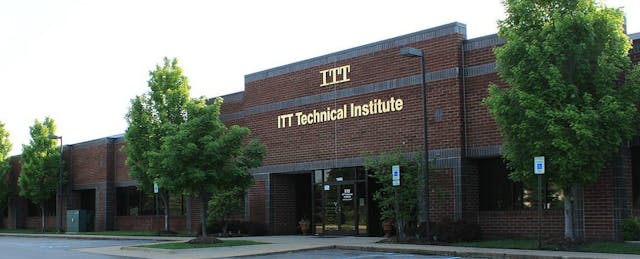This post originally appeared on Tressie McMillan Cottom’s blog. It has been lightly edited.
ITT Technical Institutes is gone, just like that.
A summary:
In the wake of devastating federal sanctions, officials from Carmel-based ITT Educational Services Inc. announced Tuesday that all ITT Technical Institute campuses will be closing.
In late August, the U.S. Department of Education barred ITT from enrolling new students who depend on federal aid and required the company to warn current students that its accreditation is in jeopardy. ITT was also told that it must increase its reserves from $94.4 million to $247.3 million, or 40 percent of federal student aid the company received in 2015.
The financial blow was too much for ITT to bear, so the decision was made to shutter operations, a move that will impact thousands of students and employees.
“It is with profound regret that we must report that ITT Educational Services, Inc. will discontinue academic operations at all of its ITT Technical Institutes permanently after approximately 50 years of continuous service,” said a statement from ITT. “With what we believe is a complete disregard by the U.S. Department of Education for due process to the company, hundreds of thousands of current students and alumni and more than 8,000 employees will be negatively affected.
It is hard to study for-profit colleges as organizations. For-profit colleges do not owe researchers access to their students or faculty or administrators. And, for-profit colleges generally cite concerns about “market competition” to not reveal the kind of things about them that most of us really want to know about: how do the faculty make sense of their jobs, how do students understand their aspirations, how do the administrators allocate resources or resolve conflicts between profit and student missions?
One way to study for-profit colleges as organizations is to study for whom the organization is most efficiently organized.
It’s kind of like back-ending into the organization.
If an organization works—and extracting billions of dollars in federal student aid money suggests ITT worked for a long time—then who it most frequently and efficiently works best for is one way to understand the organization.
Sociologist Dorothy Smith called this “textually-mediated social organization” or institutional ethnography.
I did that by assembling a database of financial texts—or SEC, marketing and investor relations documents—as well as regulatory documents (consumer and state legal actions) as well as interviews and participant observation. ITT was one of my field sites.
Here’s some of what we know from that:
- ITT actually had a more diverse student population that was more male and non-white than the typical for profit college.
- Because of number 1, ITT should have been able to weather some of the poor reception to for-profit students that plagues other schools.
- Number 2 was true and probably kept ITT afloat far longer than some would have predicted, myself included.
- What ITT did poorly or well, depending on your perspective, was highly aggressive structured recruitment. This probably increased student conversions but in so doing over-enrolled among the under-motivated or differently motivated students.
- ITT was one of those institutions that economists cite as pegging tuition to the maximum allowable amount a student could borrow from federal student aid. That means the risk of failure at ITT was very high.
- The aggressive recruiting did not extend to aggressive retainment and debt management. Other for-profit colleges invested in employees to track student debt, manage their repayment and their completion to keep defaults down and student satisfaction up. ITT did not.
- ITT extended early and often into higher levels of degrees—bachelor’s and graduate degrees. But these degrees may be more sensitive to prestige than applied associate’s or credential degrees. And ITT’s aggressive enrollment strategies undermined that prestige and misread labor market changes in local and regional markets.
- Finally, the disastrous PEAKS loan deal that ITT bungled speaks to an institutional culture that was willing to routinely subvert the spirit and letter of regulation. That did not bode well for any part of the organizational machine.
Overall, ITT spent a lot of money recruiting at scale, not enough money on retaining or managing student debt, and mis-read or failed to read the labor market for different degree types.
By reading the institutional texts produced by ITT and other for-profit colleges we get at how the sector is not a monolith. Qualitative differences like spending on recruitment or types of degrees conferred matter to solvency and public perception. And those are two things deeply intertwined: we unleash regulation forces after public perception turns, identifying an institution as illegitimate.
Here’s the problem all for-profit colleges face to various degrees: how do you produce prestige that shields you from inquiries that undermine legitimacy without sacrificing profit?
ITT certainly did not figure that out.
Students are encouraged to find out what arrangements are being made about enrollment, credit hours and debt. It looks like they will be offered student loan forgiveness. It seems the bare minimum that we can do.


